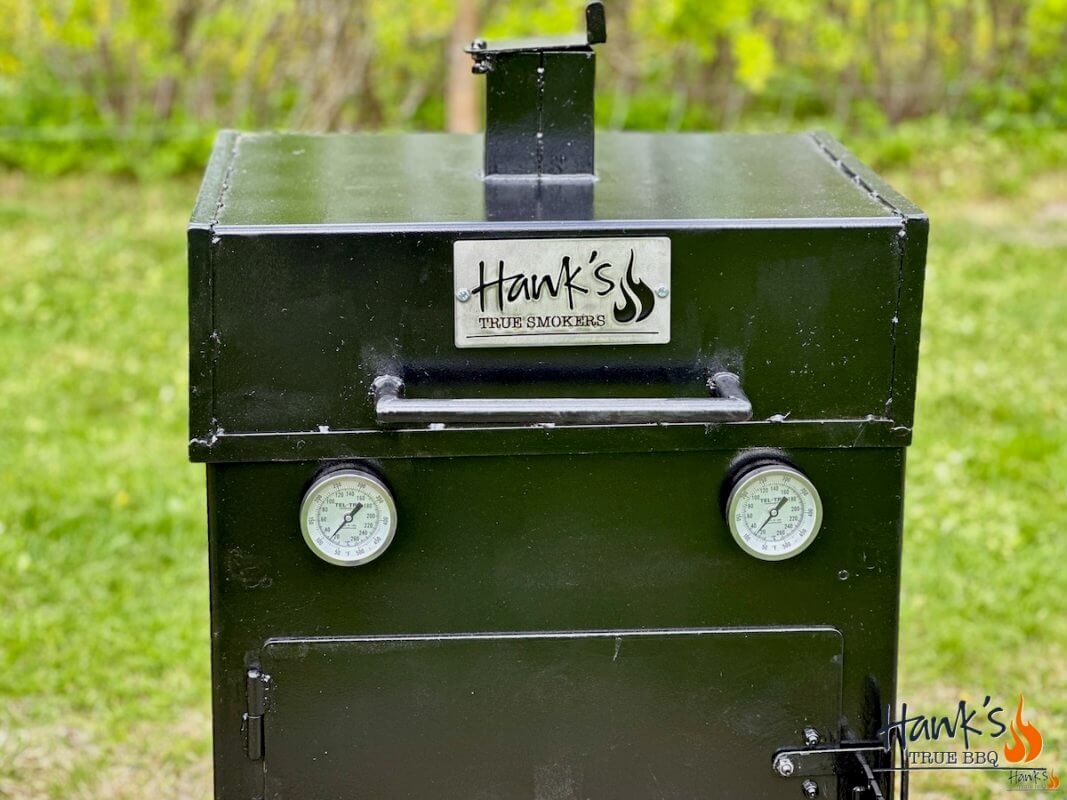What do you call a multi-funkctional grill built like a Hill Country smoker? I dubbed it Hank’s Hot Box, and it is easy to use and very versatile. Here’s how to build your own.
Background
There are a lot of different smokers and grills, and they all have their pros and cons. For home use charcoal grills are the most common, either as a kettle grill or a ceramic grill. If you want to use fire wood then offset smokers is the way to go.
Regardless of grill type they have one thing in common: they use low indirect heat to cook food with the right amount of smoke, using hot air.
Alternative ways of grilling
One thing that has fascinated me is that in certain countries and types of grills, low direct heat is used. This works just as well, of course. Let me give you two examples:
Hill Country
A “Hill Country” smoker is common in West Texas, and is built on two fires running at the same time: one burning logs fiercely to produce charcoal, and one using the glowing embers being produced in the first one.
As a pit master you shuffle the charcoal produced in the first one over to the other one, often with a shovel with a long shaft. It is a tough job being so close to high heat all day. The “grill” is often a rectangular large box, measuring roughly 1.2 x 3 meters, and being 1 meter tall. The coal bed is built on the bottom of the box, and the meat is placed on grill grates about 1 foot below the lid. A Hill Country smoker kind of resembles a huge shoe box.
When running a fire like this there is no smoke flavor added to the meat, it disappears in the roaring fire when burning logs to produce charcoal. Instead you get a unique flavor when fat and meat juices drop into the glowing embers where it evaporates, thereby flavoring the meat. You effectively get “fat smoked” meat instead of “wood smoked” meat, and this gives a unique flavor, different from the traditional offset smoker flavor.
Parrilla
A Parrilla is a common grill in South America. It has some similarities with a Hill Country smoker. You burn logs in a “brasero”, and then shuffle coal from it to the bottom of the grill to build a bed of glowing embers underneath the meat. This way of cooking also utilizes direct heat, but low direct heat. The main difference between a Parrilla and a Hill Country smoker (except for size) is that the Parrilla doesn’t have a lid. I built a Parrilla a while back, read more about it here.
YouTube video, generation I
YouTube video, generation II
Time to combine the two
I’ve been entertaining the thought of combining the two for some time into one grill, built for the backyard griller. It should be “normal” size, easy to move, and to simplify a bit I plan for using store bought charcoal. The part where you produce your own charcoal by burning logs is skipped for this one.
I liked the Parrilla I built, so to be able to use this grill as a Parrilla also I knew I needed to be able to remove the lid.
Size and measurements
I chose to make it 60 cm wide and 48 cm deep. The box height (exluding legs) is 60 cm. When the grill grates is at the top position the meat is 40 cm above the charcoal. I welded on four legs, each measuring 20 cm. The distance between the grill grate and top charcoal grate is 13 cm / 5″.
All sheet metal is 4 mm thick. I thought about using 5 mm instead, but given the rapidly increasing steel prices I went with 4 mm in the end. It will be more than enough anyway.
To make it easy to use (ease of cleaning) there’s no “edge” at the very bottom of the front, since I want to be able to just sweep out the ashes.
You can add a lot more “features”, but I chose to keep it simple. There is a simple foldable side shelf. And there are four swivel casters to move it around easily. I had two fixed casters in the back at first, but the gen II model got swivel casters all around.
In the bottom there are 10 fireproof bricks. It not only increases the lifetime of the grill, but more importantly adds thermal mass.
The drawings below outline the sizes to cut out to form the back and front, and the lid.
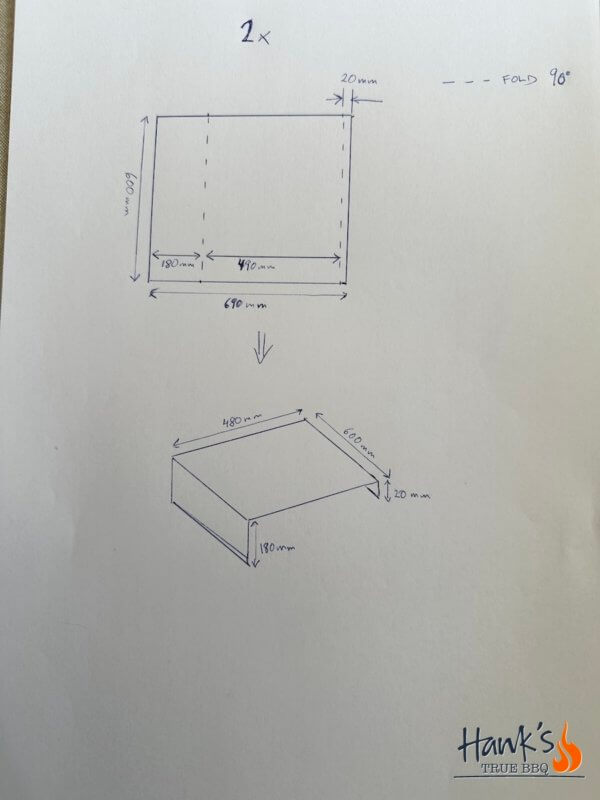
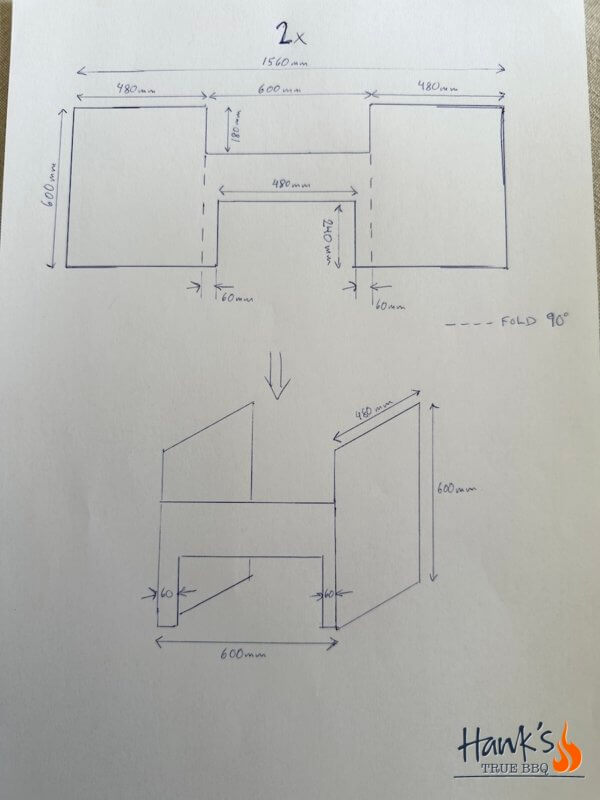

Areas of use
When placing the grill grate in the top position and also build a bed of glowing embers in the bottom and close the doors you get a miniature Hill Country-smoker.
If you instead open all doors fully and place the grill grates somewhere in the middle and again build a nice bed of glowing embers you effectively have a Parrilla.
Various stages of fabrication

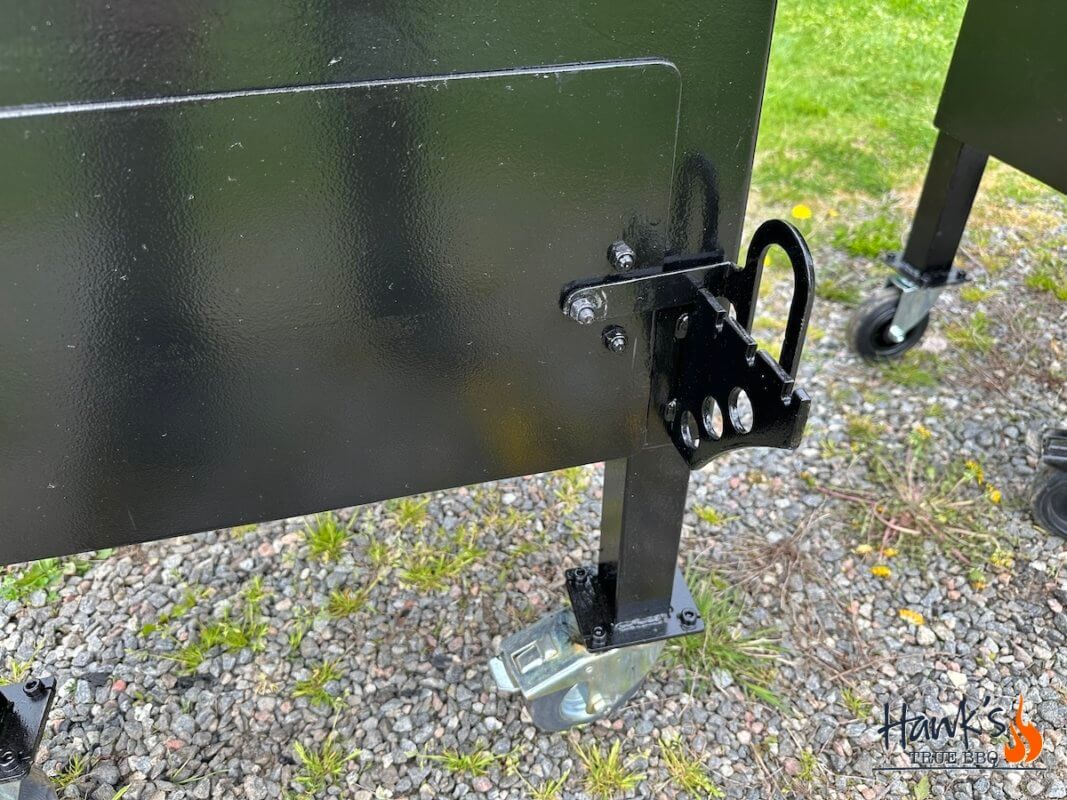
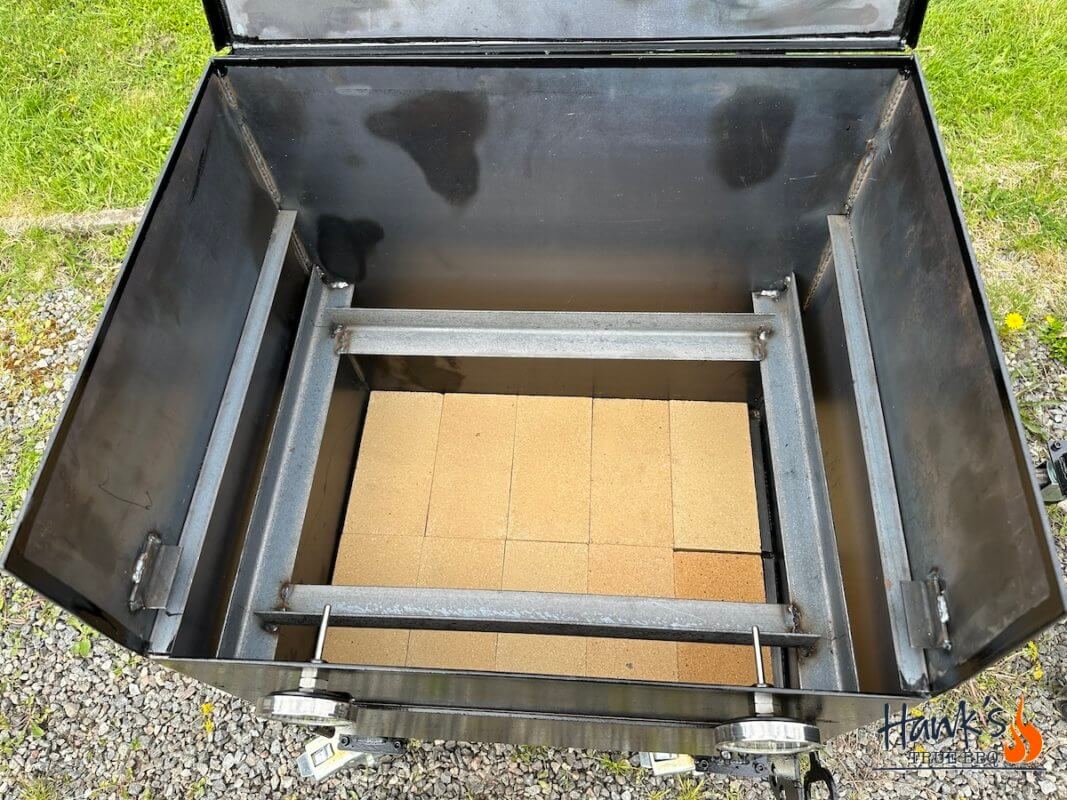
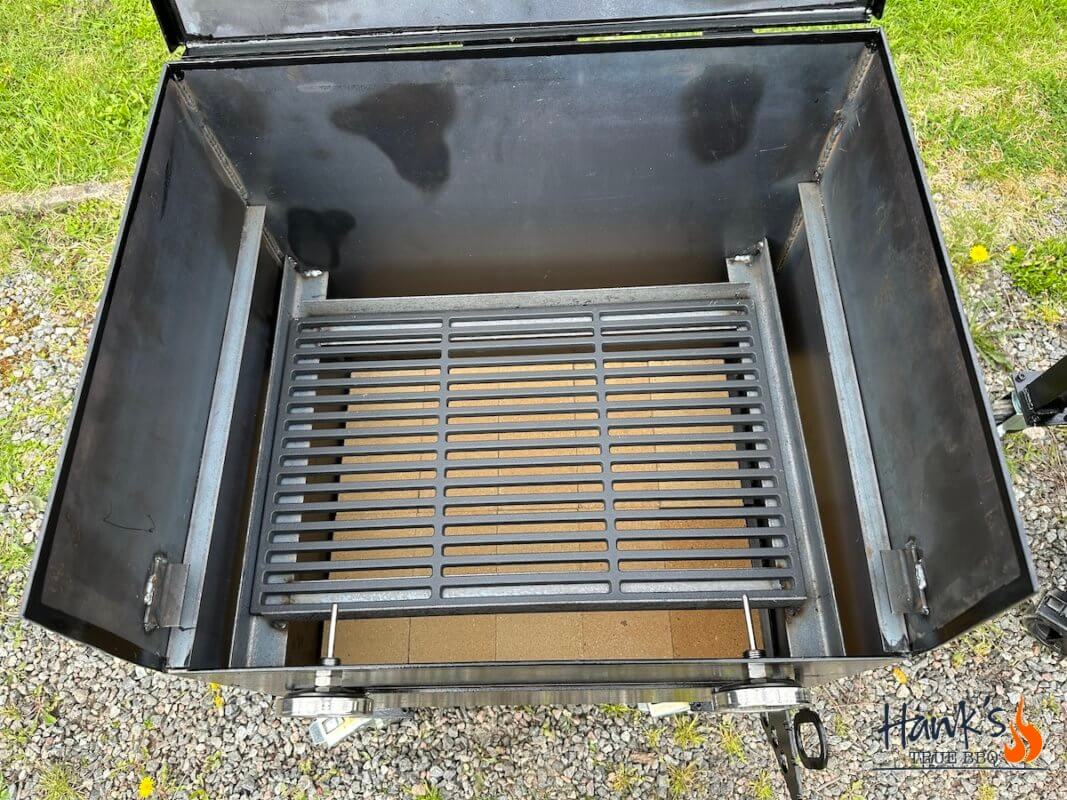
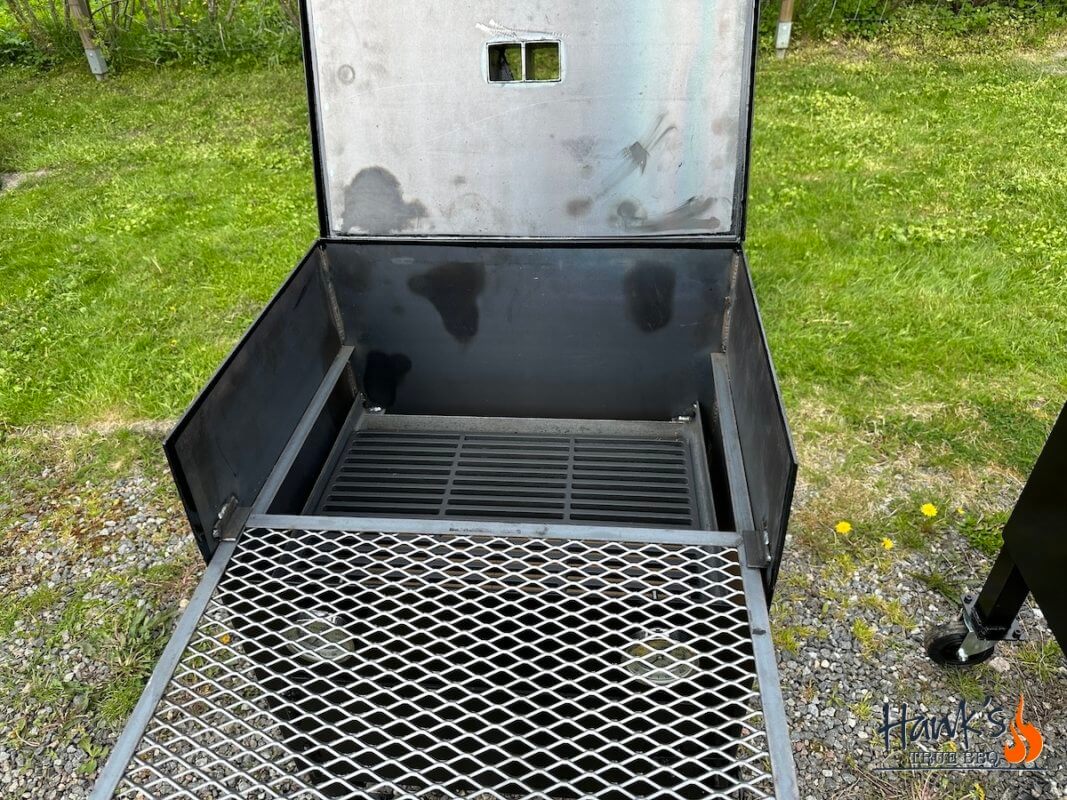
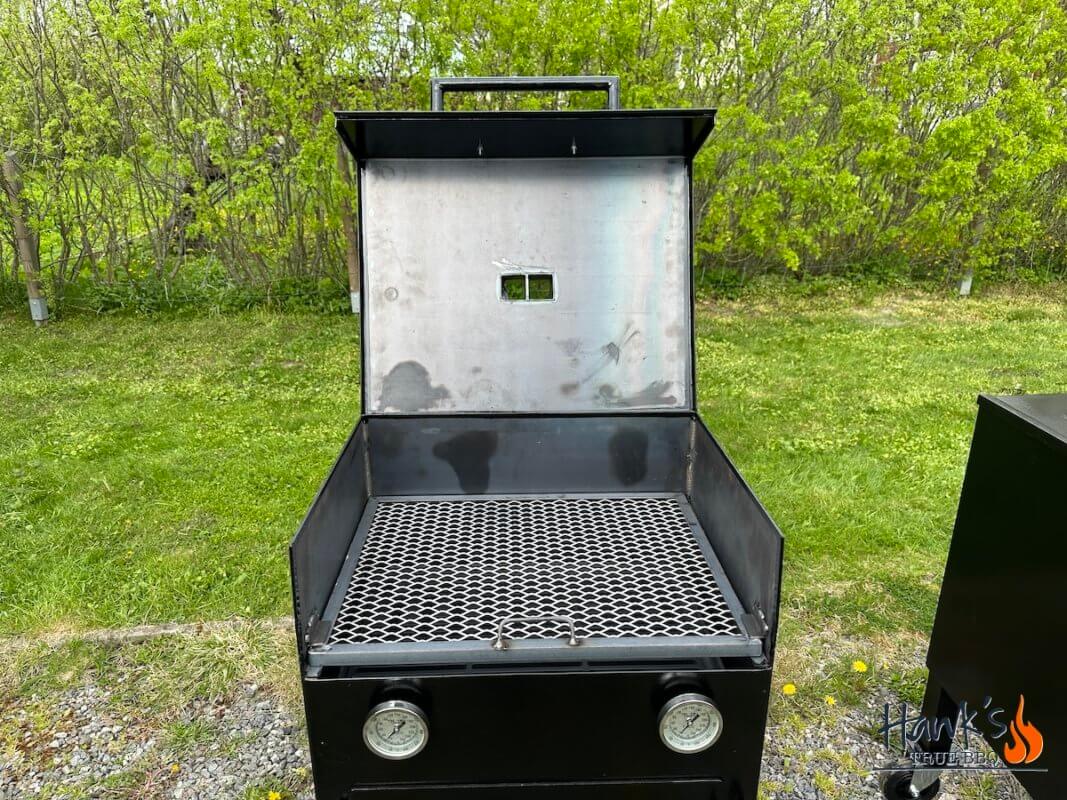
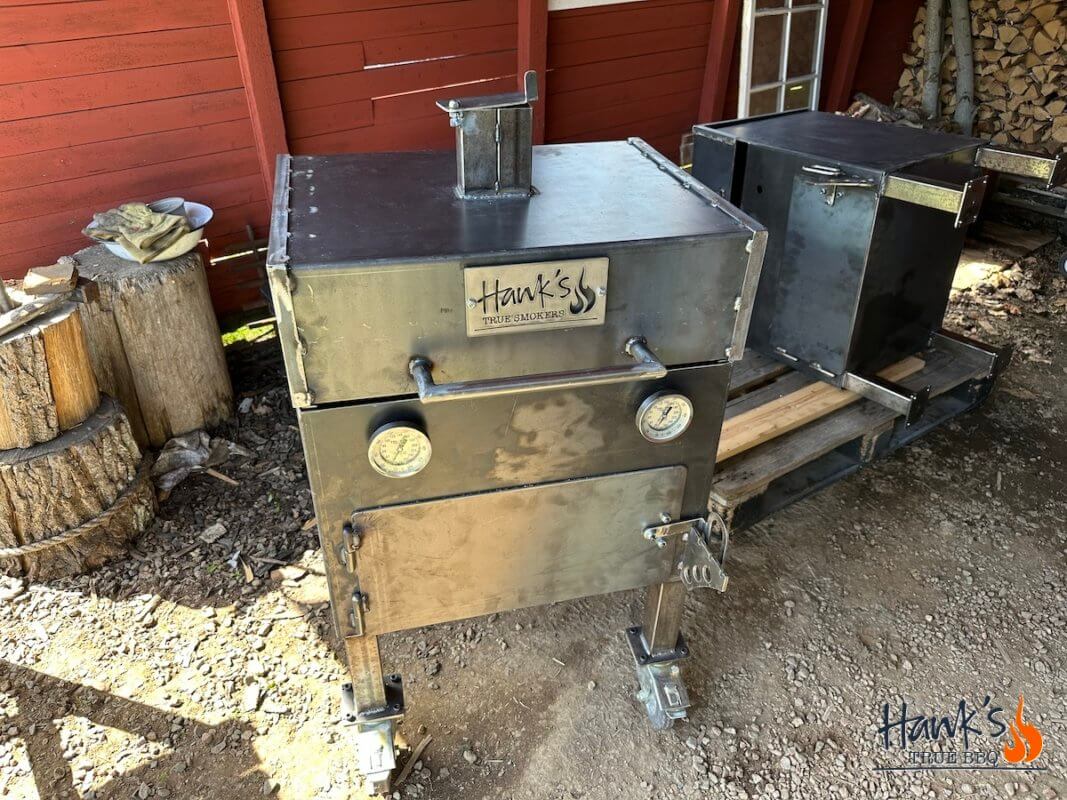
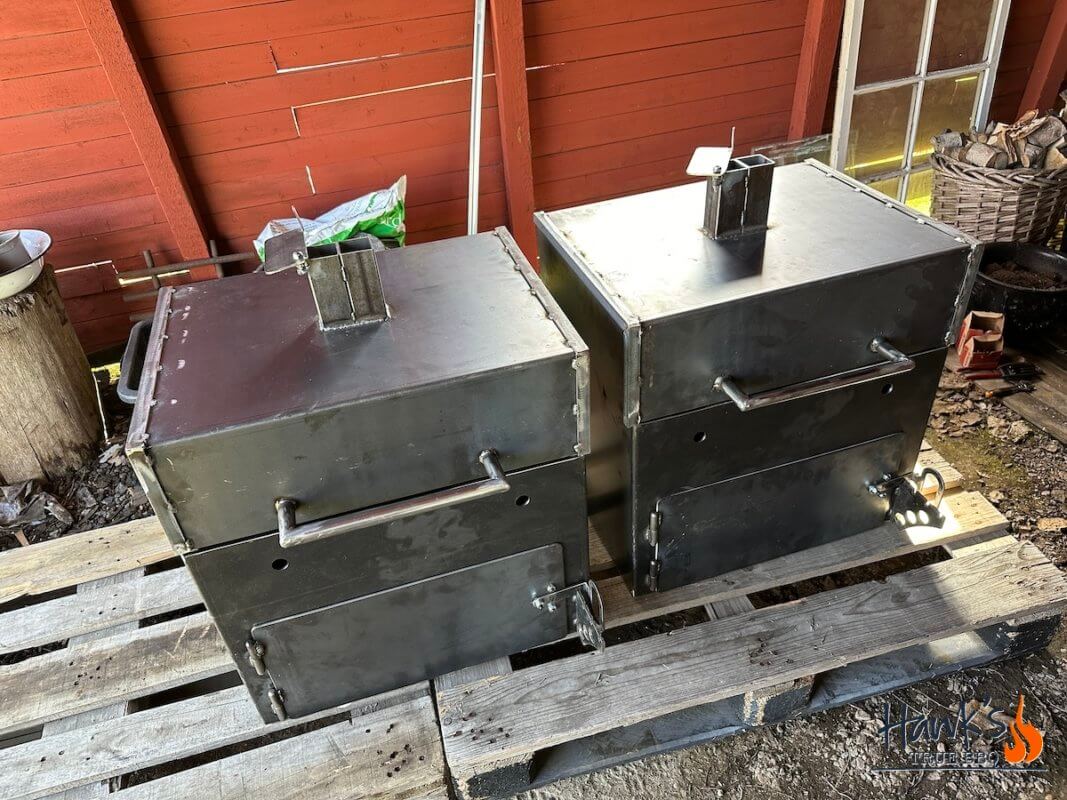
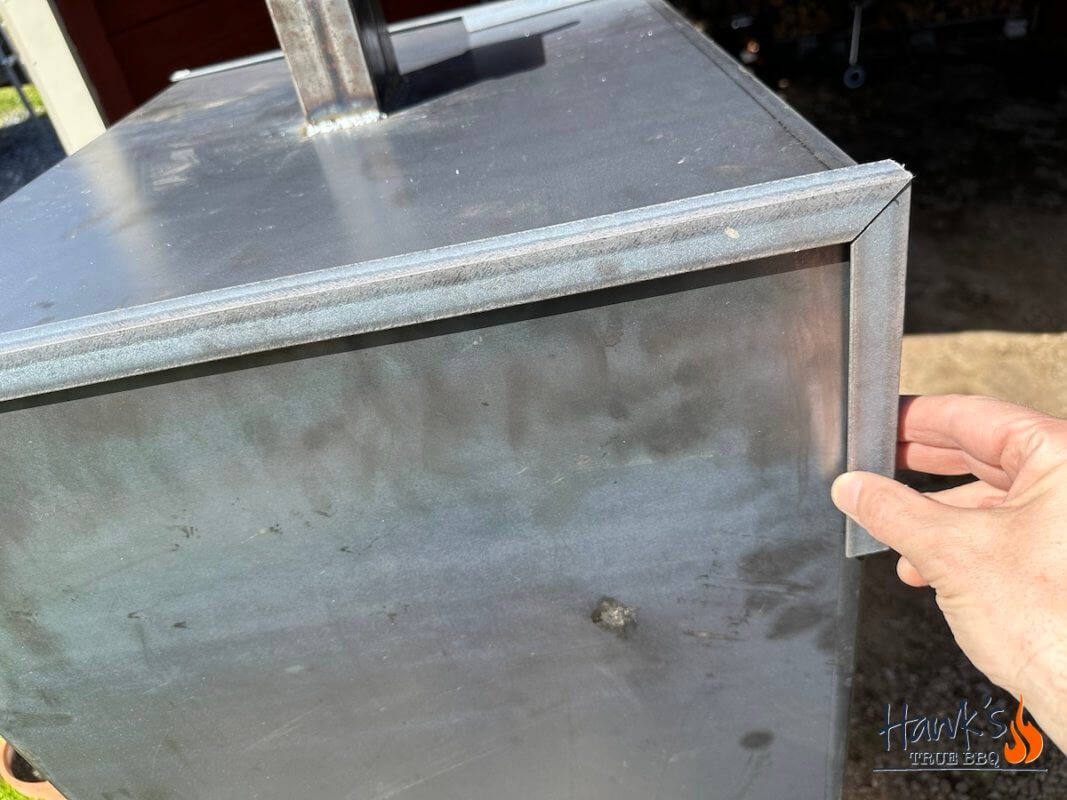
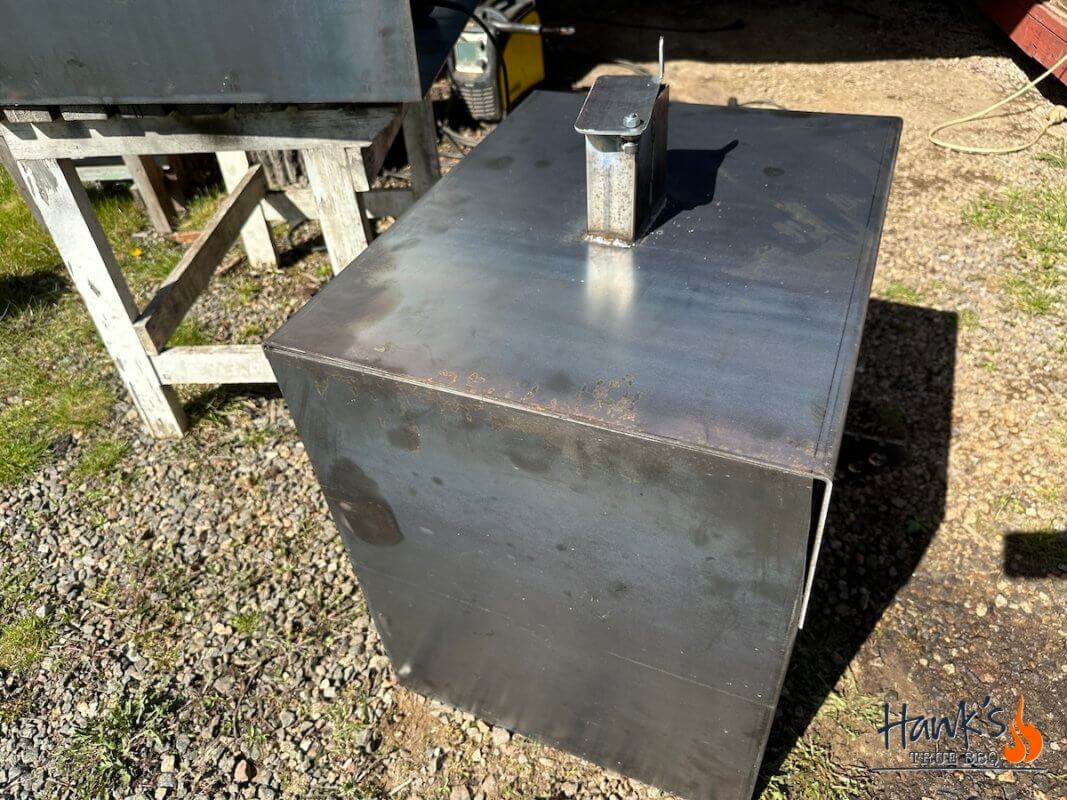
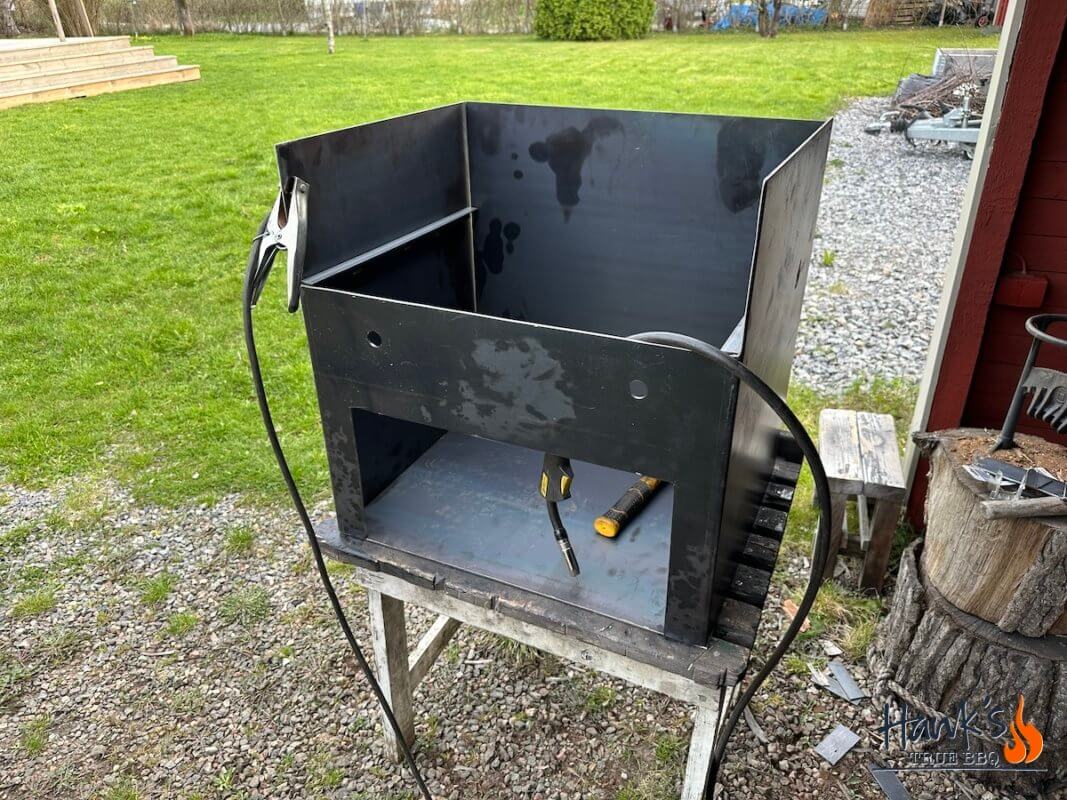
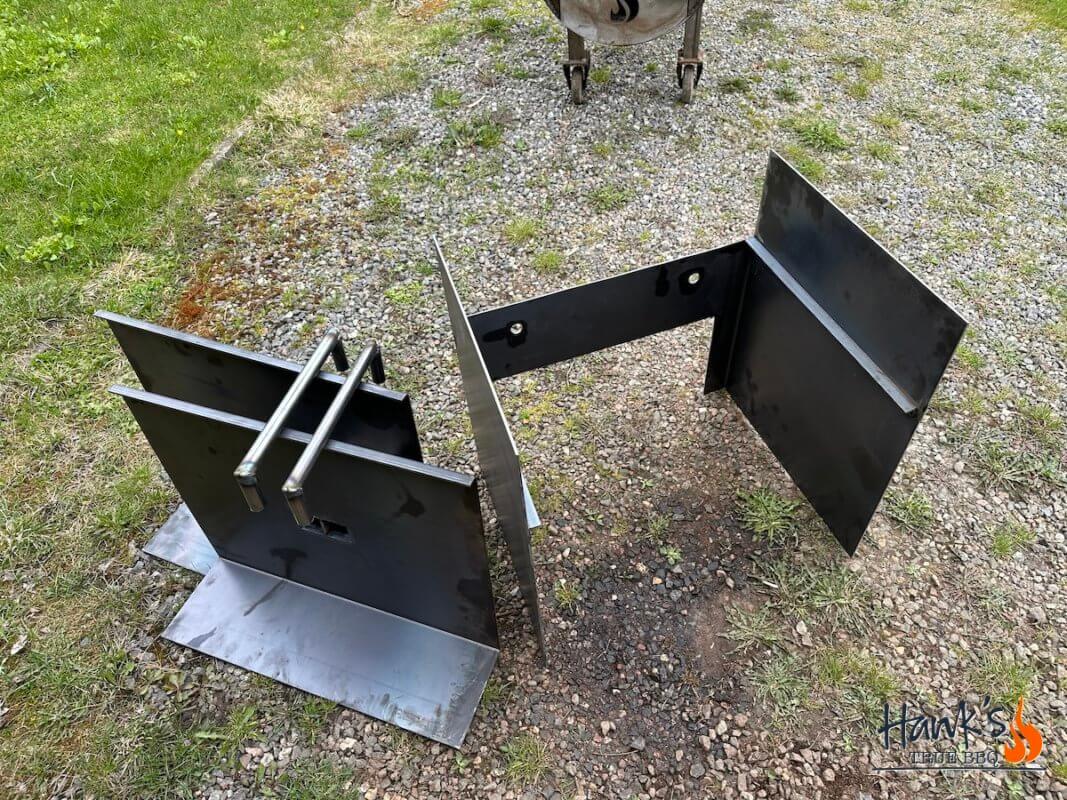
Summary
This has been a real fun build, and anyone who’s ever used a MIG welder should be able to replicate this. I like the versatility, and that it’s fun to use. Below follows a materials list to get you started.
As can be seen in the photos, I had my local steel supplier cut and bend the box out of two large sheets. It saved me hours of fabrication, and I had way less welding to do. Highly recommended.

